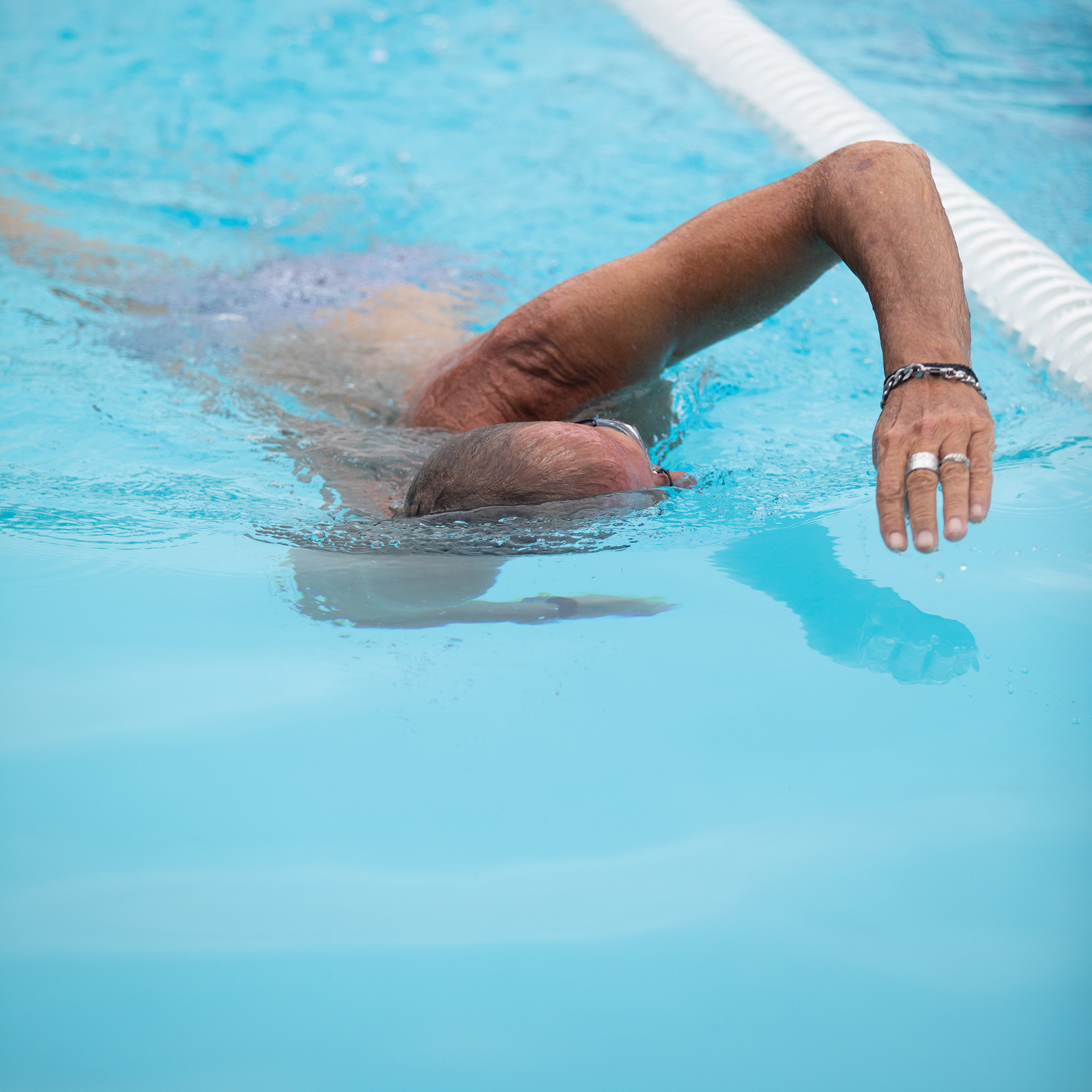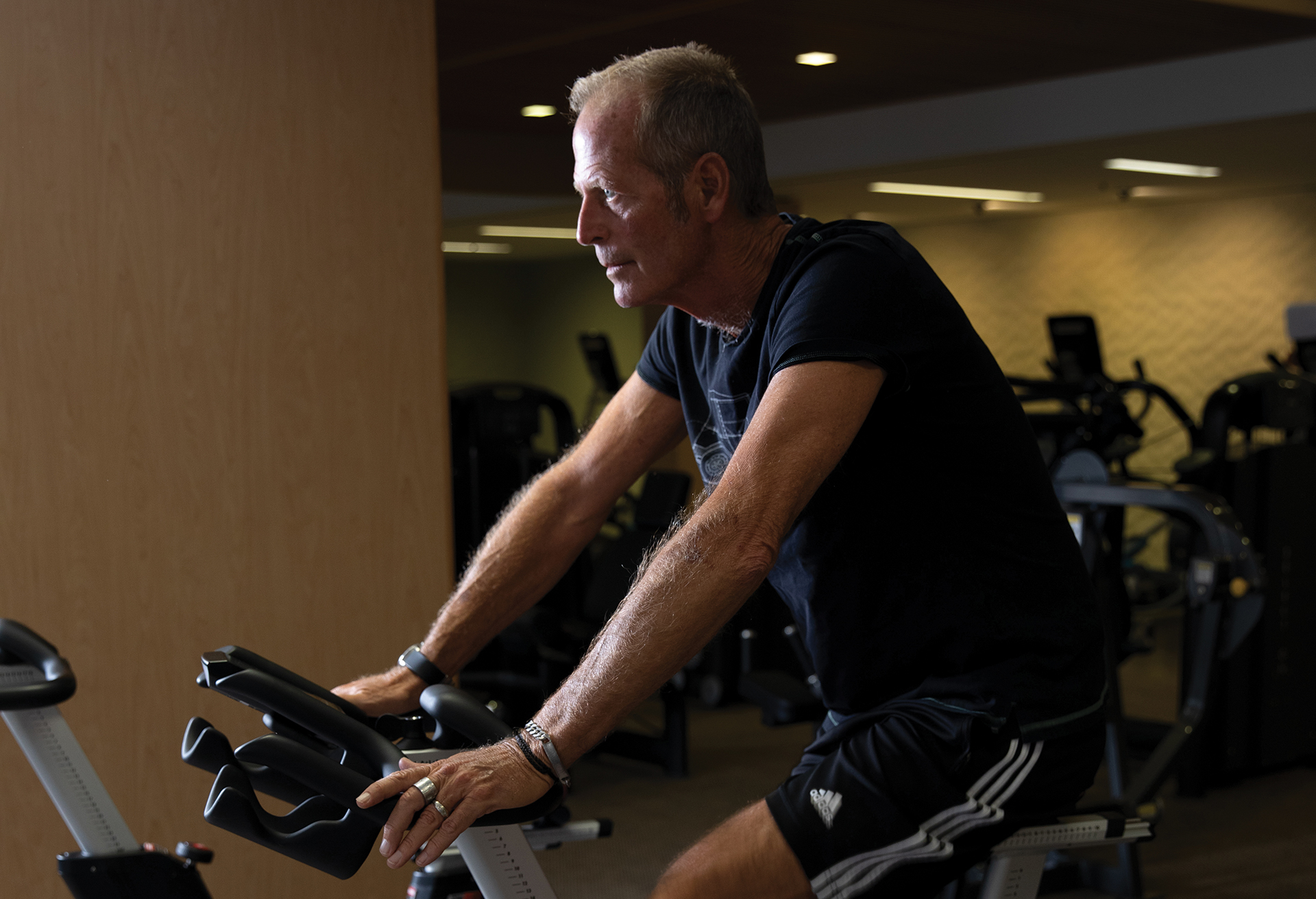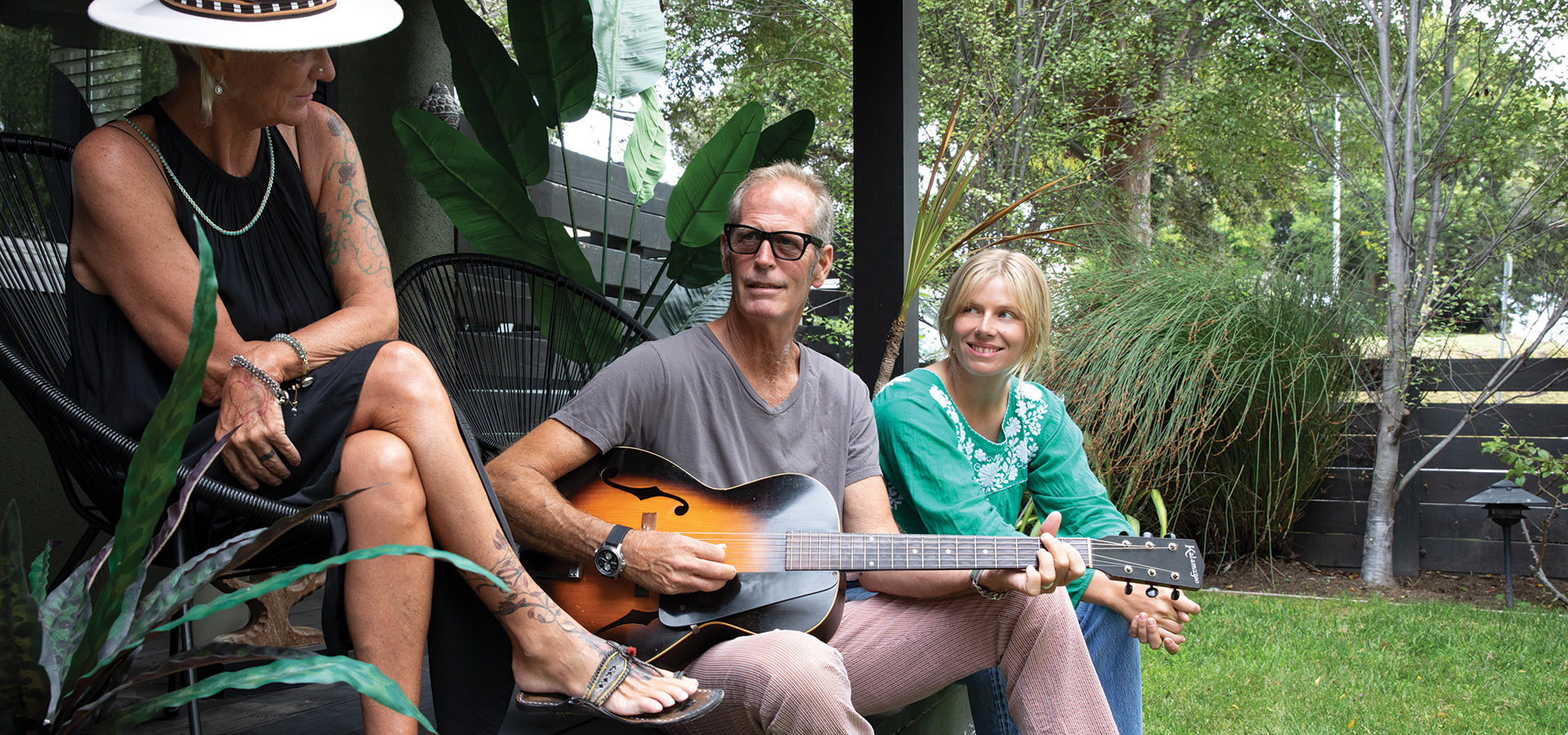Nervous and excited at the same time describes how Tom Ritchie, 60, felt just before performing a few of his original songs with his son, Hudson. Although Tom has been playing guitar since he was a child, he has never played in front of a crowd. After their performance, Tom was all smiles and could barely contain his excitement. “I can’t wait to play with Hud again!”

One day five years ago, Tom was struggling to put his wetsuit on over his feet. Even more troubling was the fact that he was having a hard time putting his foot into his sandal. His sense of smell had disappeared, but he didn’t think much of it and certainly didn’t think they were related.
Kim, his wife, repeatedly mentioned that she thought he was moving slower, but he wasn’t concerned. About a year later, he was at the gym having a brief chat with an old acquaintance before his workout. Several minutes later the friend, a doctor, called out to him and said, “Hey Tom, you okay? You don’t look right.”
Together they began to explore what these symptoms meant. After many tests turned out negative, he went to see a neurologist. The doctor gave him a prescription for Levodopa, commonly used as a dopamine replacement for the treatment of Parkinson’s disease.

Within 30 minutes of taking his first dose, he put his wetsuit on with no problem. He also was able to get his foot into his sandal without any issues. Tom explains, “It was like I took a couple aspirin for a headache and the symptoms just disappeared.” Amazed, he called his doctor, who in return stated, “Tom, I’m sorry to tell you this, but you have Parkinson’s disease.”
Parkinson’s disease is a progressive, incurable disease marked by certain recognizable symptoms including slow movement, stiffness in the limbs, uncontrollable shaking or tremors, lack of coordination and speaking difficulties. However, there are different stages of the disease and each person has a unique set of circumstances and symptoms. Every patient experiences Parkinson’s differently.
Parkinson’s is defined by the absence of dopamine in your system. A DaTscan was Tom’s next step to help substantiate the diagnosis and determine the stage. The scan is a radioactive tracer injected into the blood that circulates around your body until it reaches your brain. The tracer attaches itself to the dopamine transporter that in turn displays your dopamine levels to your doctor.

If it is lacking on the right side of your body, you will experience tremors on the left side of your body and vice versa. Tom was diagnosed with stage 1 with some symptoms of stage 2.
Dr. Michele Tagliati, Tom’s doctor and head of neurology at Cedars-Sinai, offered him Botox as one treatment. Botox is a drug commonly known to paralyze women’s faces to prevent wrinkles. In this situation, the doctor injects the Botox to reduce his tremors, which has worked well so far.
Born a Navy brat, Tom grew up on the island of Coronado just over the bridge from downtown San Diego. His father was a Navy pilot, and his childhood home was the former home of General Pendleton. The Marine Corps base camp in San Diego County is named after the general. Tom fondly remembers sightseeing tours coming by his home as a child.
For 15 years Tom worked at the Chart House mostly in the San Diego area. One day he was bartending at the La Jolla location when Kim walked into the restaurant. She had just moved to La Jolla for college and transferred from the Redondo Beach Chart House. Working at the Chart House allowed employees freedom during the day since the restaurant was only open in the evenings.
Kim was born and raised in Hermosa Beach. She and Tom eventually married and moved to the South Bay, where he became a real estate agent. A tight-knit family, they raised their three children in South Redondo.

Currie, their oldest son (named after Kim’s maiden name), is currently living in Brooklyn and working at a restaurant called The Flower Shop. Sophia is a daddy’s girl who loves being a horse trainer while attending college to become a crime scene investigator. Their youngest son, Hudson, is a legendary South Bay longboarder as well as a musician. When the family is in town, they are always together.
To slow down the progression of the Parkinson’s, Tom has a routine that includes working out four to five days a week. Four times a week he exercises on the machines in the gym and swims at the Manhattan Country Club. He also plays tennis once a week.
Tom might have Parkinson’s, but he states that he is in the best shape of his life. He is not about to let his Parkinson’s diagnosis slow him down anytime soon.
TOM’S YEAR IN HEALTH
DAILY NUTRITION:
For breakfast I typically have avocado and toast, a banana and a protein drink. I always make sure to have my breakfast at least 45 minutes after I take my medication. I do this because protein blocks the effectiveness of my medication. For lunch I typically have a light snack. Dinner is always a healthy choice and the big meal of the day.
FREE TIME:
I enjoy spending family time with my three grown children.
FITNESS CLASS I’D LIKE TO TRY:
Lately I’ve been considering trying yoga. My wife previously signed me up for private Pilates lessons. I could tell it would be very beneficial but was a bit out of my comfort zone. I may reconsider going back and giving it another try.
HEALTH GOAL:
To be healthy and happy with my family through this journey. And most importantly I want to thank my wife, Kim, for her support through it all.









